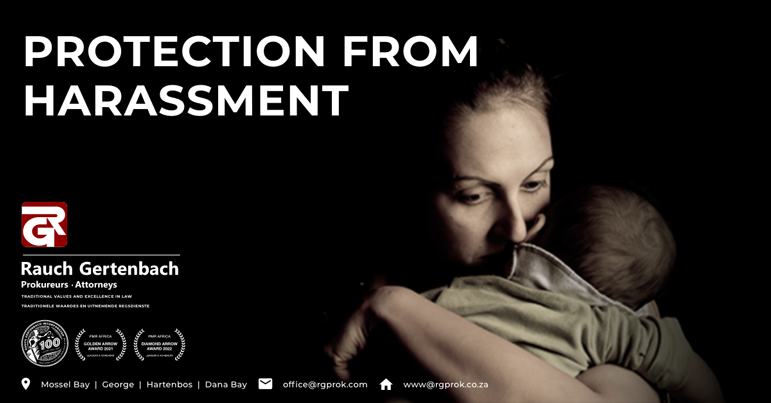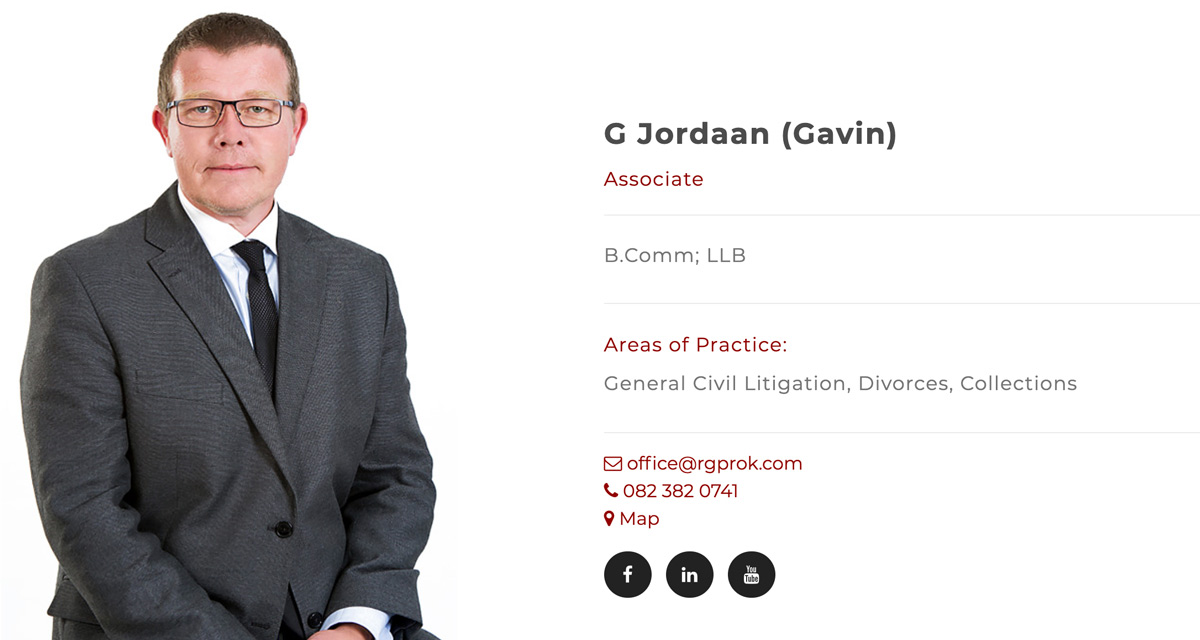PROTECTION FROM HARASSMENT
The latest publication of crime statistics in South Africa has again highlighted what can only be described as the unacceptable prevalence of abuse in domestic as well as non-domestic relationships, particularly against women and children. Given the same, it is important to reiterate that victims of abuse and/or harassment do have remedies available which are removed from those which were traditionally relied on upon direct approach to the South African Police Services. These alternate remedies are provided for by way of the Protection from Harassment Act, Act 17 of 2011, and the Domestic Violence Act, Act 116 of 1998, both acts widely define harassment and domestic violence respectively.
The primary relief granted by these Acts upon successful application launched by a complainant is protection orders. Although these applications are launched on a Civil basis in the Magistrates Court via application supported by way of affidavit, the relief granted upon successful application and subsequent enforcement thereof by the South African Police Services are criminal in nature. The Acts thus provide a complainant with a form of relief which in most instances is achieved on an expedited basis, particularly when granted in the form of an interim order.
Suffice it to say for present purposes that for a complainant to successfully apply for relief in terms of the Domestic Violence Act, a domestic relationship must exist between the parties concerned. Given that the process, requirements, and relief granted overlap to a large degree between the two Acts, this article will use as a reference point for further discussion of the Protection from Harassment Act.
In 2013 the Government provided the mechanism for the protection of vulnerable members of society from acts of violence, the primary purpose of the Protection from Harassment Act being to provide victims of alleged harassment with an effective remedy. The remedy available takes the form of a protection order and can in certain instances provide interim relief without the need for a protracted investigation by authorities. This is possible given that the Court can if a prima facie case for harassment has been made out by the Complainant, grant an interim protection order against the Respondent who upon a future date indicated, can on good cause show why the interim order granted should not be made final. The result is immediate interim relief being available to a complainant who has placed sufficient information before Court in support thereof.
The Act defines harassment in broad terms and includes engaging in both direct and indirect conduct that the Respondent knows or ought to have known will cause harm or inspires a person complaining of harassment to reasonably believe that harm could be caused. The conduct in question is wide ranging and includes watching, pursuing, accosting, verbal, written, and electronic communications as well as sexual harassment.
In addition, harm is not limited to physical harm but includes mental, psychological, physical, and economic harm. Should the harassment take the form of electronic communication the source of which is unknown, the Court can order service providers to disclose the identity of the user whose conduct is considered harassment. A complainant may also be assisted in the launching of an application by any person who has a material interest in the well-being of the complainant.
If the relief sought is granted, be that on an interim basis or not, the Respondent will be served with a copy thereof by the South African Police Services.
If granted on an interim basis, the Court will ordinarily issue a warrant of arrest for the Respondent which is suspended on the condition that the Respondent does not engage in any of the prohibited conduct specifically identified in the order. Should the Respondent however engage in said conduct, the complainant can approach the South African Police Services who after investigating, must arrest the Respondent if it is found that his / her conduct is in contravention of the order. If an order is granted on a final basis, the same principle will apply.
If upon the date of formal hearing of the application the Respondent appears at Court, evidence will be led by the parties inclusive of any witnesses who might be called. The Court will thereafter either confirm the interim order/grant a final order or dismiss the application if, on the evidence presented, the Court is of the view that the relief sought is not warranted. If no appearance is made by the Respondent, the Order will be made final and remain in force for a period of 5 years or such period as the Court may deem appropriate.
With a brief synopsis of the process sketched, it is important to note that the efficacy of the remedies available to complainants is often lost at the initial application stage, specifically given the following:
Complainants seeking interim relief without providing sufficient reason and/or prima facie proof in support thereof, the interim relief sought not being granted based on the papers before Court;
The specific relief sought is not adequately addressed on the papers, any order granted potentially couched in such a manner that the specific conduct which the complainant is attempting to have prohibited does not fall within the ambit of the order.
To avoid the launching of an application that could potentially negate the effectiveness of the remedy sought, it is advisable to seek legal advice during the preliminary drafting stage, in particular where interim relief is being sought by a complainant.
Article by Gavin Jordaan (B.Comm LLB), Associate
For more information, kindly contact Gavin by e-mail, gavin@rgprok.com or 044 601 9900 option 2.
___
Disclaimer
Nothing contained in this publication is to be considered as the rendering of legal advice for specific cases, and readers are responsible for obtaining such advice from their own legal counsel. This publication is intended for educational and informational purposes only.








